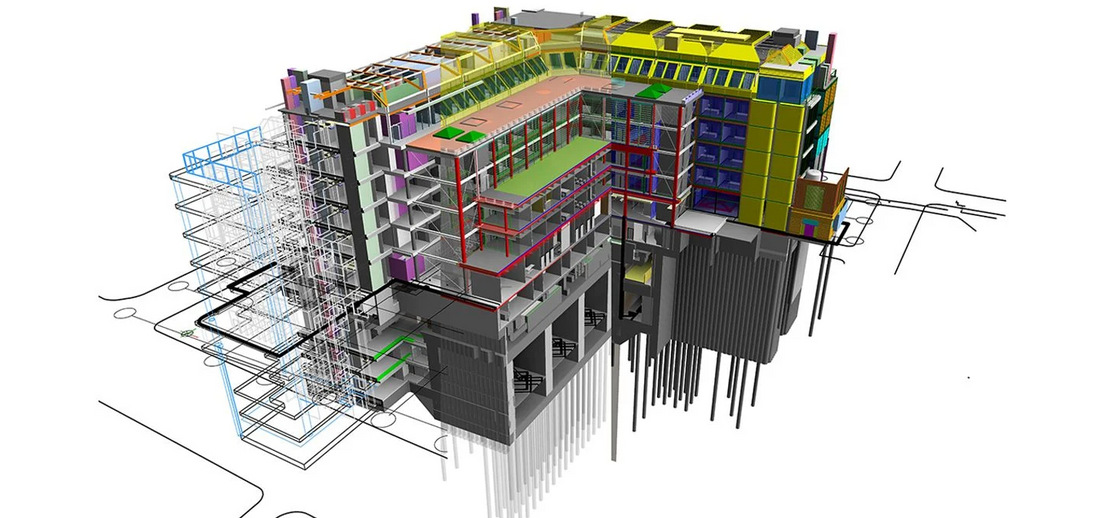Construction companies of all sizes are adopting new tools to increase project cost savings and production speed while addressing industry concerns like labor shortages, costs, and sustainability. Below are key technologies shaping residential and commercial projects in 2025, based on recent developments.
1. Building Information Modeling (BIM) Making Advances
Building Information Modeling (BIM) has evolved from simple 3D models of buildings into 5D systems, integrating cost, scheduling, and real-time data. Commercial sites use BIM to create digital twins—virtual building replicas—to monitor project performance and minimize the possibility of conflicts. Residential builders rely on cloud-based BIM platforms like Autodesk BIM 360 for collaborative designs, supporting modular construction that can halve build times. Increased adoption rates of this software means that more projects than ever are being modeled digitally before a shovel breaks the ground.
2. Drones and Augmented Reality (AR)
Drones with AI conduct 3D scans and safety checks, speeding up surveys for both residential and commercial sites. AR tools, like Microsoft HoloLens, overlay digital models onto physical spaces, aiding visualization and reducing errors during construction.
New software from DJI is allowing the full scanning and digital replication of buildings and large geographical areas, both externally and internally. This can be used to document and inspect the progress of large construction sites, as well as the full digital replication of existing buildings. This further accelerates and lowers the cost of entry to making digital twins in BIM formats for existing and future projects.
3. Robotics and Automation
Robots can handle repetitive tasks like bricklaying and rebar tying, improving precision and safety. For example, FBR’s Hadrian X robot streamlines masonry in residential homes, cutting costs. In commercial projects, autonomous systems process materials like pipes directly from digital models, minimizing waste.
4. Generative AI for Design and Planning
It seems like AI is everywhere these days. The LLM style of AI - Chat GPT, Grok, Gemini, and Meta AI, create large databases of complex computational thought that can be interacted with easily - it's as simple as talking to a chatbox.
This type of generative AI can be used in construction to automate design tasks, creating multiple layouts and checking compliance with building codes. In residential projects, it reduces errors by about 20%, while in commercial builds, it optimizes material use and predicts maintenance needs. Tools from companies like Autodesk are becoming common, with wider use expected by late 2025.

5. Sustainable Materials and Systems
Smart materials, such as self-healing concrete, and IoT systems for energy management are gaining traction. Residential homes often use low-VOC paints and solar panels, while commercial buildings employ connected sites for real-time monitoring, cutting incidents by over 50%.
These technologies are practical responses to industry needs, improving efficiency and reducing environmental impact. For more news about the residential and commercial construction industries, sign up for our newsletter at jcampoli.com

